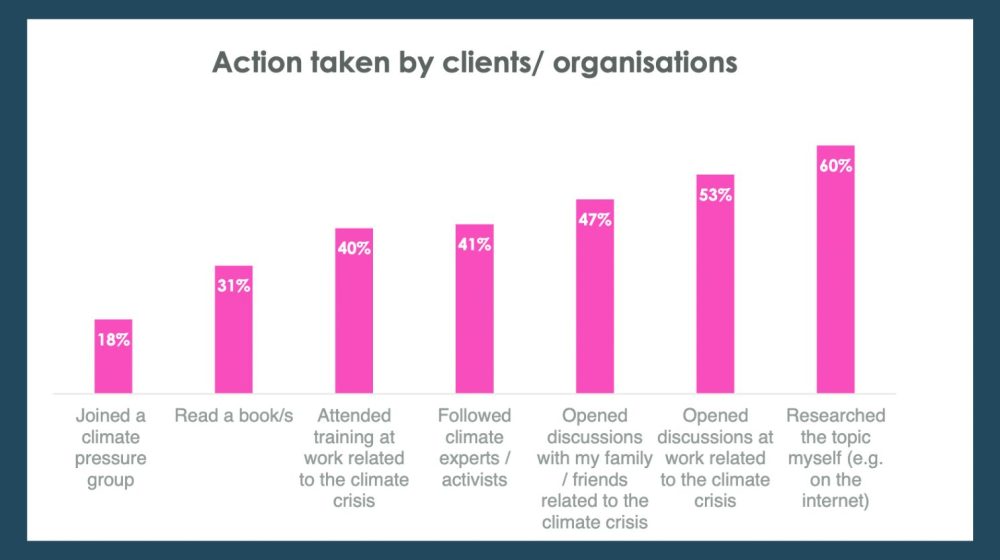
No Joke: How Humor at Work Can Propel Culture & The Bottom Line
 Senior leaders are grappling with economic headwinds, including prolonged inflation, continued wage pressures, labor shortages, and overall slowing growth. Additionally, according to the most recent Deloitte Well-Being at Work Study, employee well-being continues to decline. To combat these issues and drive growth, it’s imperative that leaders have high-performing teams that work together effectively, produce high-quality work, and achieve their goals efficiently. This requires the alignment of multiple generations of employees working together for the first time. To accomplish this, leaders need to develop new strategies for motivating their people to remain resilient, engaged, innovative, and collaborative to drive top-line and bottom-line results.In a new research report, No Joke, Peppercomm partnered with The Comedy Arts Program at DePaul University to field an online study of 2,000 U.S. full-time employees along with qualitative interviews across multiple generations to better understand their needs and preferences at work. The results showed there are key areas where leaders and workers agree, but there are major differences in their preferences that organizations need to bridge to grow successfully. Critically, the study outlines the case for a paradigm-shifting approach to help leaders accomplish these goals and more: humor. Yes, humor.According to the survey, employees are looking for leaders to:— Motivate them to do their best (selected by 62% of respondents)— Educate and guide them on their career journey (53%) — Provide opportunities to learn and grow (50%)However, when asked what they want from their workforce, leaders said they value:— The ability to take and follow directions (53%)— The ability to anticipate needs and take initiative (46%) — Providing new ideas and ways of doing things (42%)Among Gen-Z workers, the desire for leaders to provide more motivation and guidance is even greater, with 65% of respondents in this demographic preferring a manager who is more of a mentor and teacher. Employees also said that communication (82%) was the most important element they desired from their leaders. They expect leadership to be transparent and to work alongside them. Alternatively, leaders seek employees to work more independently and follow directions.A clear disconnect exists between leaders who say they value their staff following instructions, while Gen Z displays a clear belief that a leader should not expect their people to thrive in the traditional command-and-control model. Along with insights from Peppercomm Laughing Matters Council member Liz Joynt Sandberg, the paper offers a deep dive into how humor can better connect employees across generations, break down silos, and create better overall engagement that ensures long-term success.From Gen X reminiscing about the days of fax machines to Gen Z oversharing on social media, humor (when implemented properly) can connect people’s different experiences and viewpoints by imparting vulnerability and empathy to any group. Moreover, when colleagues laugh together, they stimulate alpha brainwaves that have been proven to empower the mind to change old ways of thinking, behaving, and innovating. This improves almost anyone’s ability to pivot and address opportunities they never thought possible. Organizations should look for ways to appropriately incorporate humor into their work environment and access the shared benefit of this approach for both leaders and employees. Read the full report here.
Senior leaders are grappling with economic headwinds, including prolonged inflation, continued wage pressures, labor shortages, and overall slowing growth. Additionally, according to the most recent Deloitte Well-Being at Work Study, employee well-being continues to decline. To combat these issues and drive growth, it’s imperative that leaders have high-performing teams that work together effectively, produce high-quality work, and achieve their goals efficiently. This requires the alignment of multiple generations of employees working together for the first time. To accomplish this, leaders need to develop new strategies for motivating their people to remain resilient, engaged, innovative, and collaborative to drive top-line and bottom-line results.In a new research report, No Joke, Peppercomm partnered with The Comedy Arts Program at DePaul University to field an online study of 2,000 U.S. full-time employees along with qualitative interviews across multiple generations to better understand their needs and preferences at work. The results showed there are key areas where leaders and workers agree, but there are major differences in their preferences that organizations need to bridge to grow successfully. Critically, the study outlines the case for a paradigm-shifting approach to help leaders accomplish these goals and more: humor. Yes, humor.According to the survey, employees are looking for leaders to:— Motivate them to do their best (selected by 62% of respondents)— Educate and guide them on their career journey (53%) — Provide opportunities to learn and grow (50%)However, when asked what they want from their workforce, leaders said they value:— The ability to take and follow directions (53%)— The ability to anticipate needs and take initiative (46%) — Providing new ideas and ways of doing things (42%)Among Gen-Z workers, the desire for leaders to provide more motivation and guidance is even greater, with 65% of respondents in this demographic preferring a manager who is more of a mentor and teacher. Employees also said that communication (82%) was the most important element they desired from their leaders. They expect leadership to be transparent and to work alongside them. Alternatively, leaders seek employees to work more independently and follow directions.A clear disconnect exists between leaders who say they value their staff following instructions, while Gen Z displays a clear belief that a leader should not expect their people to thrive in the traditional command-and-control model. Along with insights from Peppercomm Laughing Matters Council member Liz Joynt Sandberg, the paper offers a deep dive into how humor can better connect employees across generations, break down silos, and create better overall engagement that ensures long-term success.From Gen X reminiscing about the days of fax machines to Gen Z oversharing on social media, humor (when implemented properly) can connect people’s different experiences and viewpoints by imparting vulnerability and empathy to any group. Moreover, when colleagues laugh together, they stimulate alpha brainwaves that have been proven to empower the mind to change old ways of thinking, behaving, and innovating. This improves almost anyone’s ability to pivot and address opportunities they never thought possible. Organizations should look for ways to appropriately incorporate humor into their work environment and access the shared benefit of this approach for both leaders and employees. Read the full report here.
 Jackie Kolek is Executive Vice President and Chief Innovation Officer at Peppercomm. She is also a new member of IPR ELEVATE. She currently leads Peppercomm’s financial and professional services sector, developing and executing fully-integrated campaigns. Over her nearly 30-year career, she has worked at some of the industry’s leading firms and is member of Page Up and the Wiseman.
...
Jackie Kolek is Executive Vice President and Chief Innovation Officer at Peppercomm. She is also a new member of IPR ELEVATE. She currently leads Peppercomm’s financial and professional services sector, developing and executing fully-integrated campaigns. Over her nearly 30-year career, she has worked at some of the industry’s leading firms and is member of Page Up and the Wiseman.
...

 PRCA examined the perceptions of public relations practitioners toward their role in communicating the climate crisis.A survey of 230 communications practitioners was conducted from June 1-27, 2023.Key findings include:1.) 95% of practitioners are advising clients/colleagues on how they can communicate the part they play in the climate crisis.2.) 47% of clients/organizations are implementing sustainability policies and practices.— 44% are taking measures to reduce their carbon footprint— 38% are contributing to debates on the subject— 34% are educating their consumers in their communication and carbon footprint measures.3.) 44% said the knowledge their clients/organizations have of climate change is often “incorrect” or “misinformed.”— 58% feel like their client/organization needs to be an expert in order to contribute to the debate.4.) 57% feel like the organization they work for is not doing enough to tackle the climate crisis.— 33% have experienced requirements for team members to travel for meetings that could have been online.— 20% have had clients/bosses not believing in the climate crisis in general.Read the full report here
PRCA examined the perceptions of public relations practitioners toward their role in communicating the climate crisis.A survey of 230 communications practitioners was conducted from June 1-27, 2023.Key findings include:1.) 95% of practitioners are advising clients/colleagues on how they can communicate the part they play in the climate crisis.2.) 47% of clients/organizations are implementing sustainability policies and practices.— 44% are taking measures to reduce their carbon footprint— 38% are contributing to debates on the subject— 34% are educating their consumers in their communication and carbon footprint measures.3.) 44% said the knowledge their clients/organizations have of climate change is often “incorrect” or “misinformed.”— 58% feel like their client/organization needs to be an expert in order to contribute to the debate.4.) 57% feel like the organization they work for is not doing enough to tackle the climate crisis.— 33% have experienced requirements for team members to travel for meetings that could have been online.— 20% have had clients/bosses not believing in the climate crisis in general.Read the full report here
 ...
... 
 Pew Research Center analyzed the evolution of the #BlackLivesMatter hashtag on Twitter and examined how individuals engage with social issues on social media.An analysis of 44 million public tweets over the last 10 years was conducted along with a survey of 5,000 U.S. adults from May 15-21, 2023.Key findings include:1.) 77% of social media users have come across content related to the Black Lives Matter Movement.— 24% of users have posted or shared content in support of the movement, and 10% have posted or shared content in opposition of the movement.2.) 81% of U.S. adults believe police violence against black people is a problem.3.) 43% say social media is “extremely effective” or “very effective” way to bring attention to this issue compared to only 32% who say news organizations are “extremely effective” or “very effective.”— However, 76% of U.S. adults said “social media makes people think they’re making a difference when they really aren’t.”4.) 30% of social media users said these sites were “very important” or “somewhat important” to them for getting involved with issues they care about, a decrease from 44% in 2020.Read the full report here
...
Pew Research Center analyzed the evolution of the #BlackLivesMatter hashtag on Twitter and examined how individuals engage with social issues on social media.An analysis of 44 million public tweets over the last 10 years was conducted along with a survey of 5,000 U.S. adults from May 15-21, 2023.Key findings include:1.) 77% of social media users have come across content related to the Black Lives Matter Movement.— 24% of users have posted or shared content in support of the movement, and 10% have posted or shared content in opposition of the movement.2.) 81% of U.S. adults believe police violence against black people is a problem.3.) 43% say social media is “extremely effective” or “very effective” way to bring attention to this issue compared to only 32% who say news organizations are “extremely effective” or “very effective.”— However, 76% of U.S. adults said “social media makes people think they’re making a difference when they really aren’t.”4.) 30% of social media users said these sites were “very important” or “somewhat important” to them for getting involved with issues they care about, a decrease from 44% in 2020.Read the full report here
... 
 This summary is provided by the IPR ESG & Purpose Research LibraryThe Yale Program on Climate Change Communication researched American voters’ opinions on domestic climate and energy policies.A national survey of 861 registered U.S. voters was conducted April 18 – May 1, 2023.Key findings include:1.) 54% of registered voters thought global warming should be a “high” or “very high” priority for President Joe Biden and Congress.— 88% of liberal Democrats thought global warming was a “high” or “very high” priority, followed by 41% of liberal/moderate Republicans, and 9% of conservative Republicans.2.) 79% of registered voters said they support additional funding for renewable energy research.— 98% of liberal Democrats supported funding for renewable energy research, followed by 70% of liberal/moderate Republicans, and 50% of conservative Republicans.3.) 70% of registered voters said corporations and industries should do “more” or “much more” to address global warming.— 63% of registered voters said U.S. Congress should do more to address global warming.— 54% said President Joe Biden should do more.Read the full report here
...
This summary is provided by the IPR ESG & Purpose Research LibraryThe Yale Program on Climate Change Communication researched American voters’ opinions on domestic climate and energy policies.A national survey of 861 registered U.S. voters was conducted April 18 – May 1, 2023.Key findings include:1.) 54% of registered voters thought global warming should be a “high” or “very high” priority for President Joe Biden and Congress.— 88% of liberal Democrats thought global warming was a “high” or “very high” priority, followed by 41% of liberal/moderate Republicans, and 9% of conservative Republicans.2.) 79% of registered voters said they support additional funding for renewable energy research.— 98% of liberal Democrats supported funding for renewable energy research, followed by 70% of liberal/moderate Republicans, and 50% of conservative Republicans.3.) 70% of registered voters said corporations and industries should do “more” or “much more” to address global warming.— 63% of registered voters said U.S. Congress should do more to address global warming.— 54% said President Joe Biden should do more.Read the full report here
... 
 Dr. Grant Packard and Dr. Jonah Berger analyzed how the use of concrete language shaped consumer behavior and satisfaction. Concrete language was defined as the use of “specific, tangible, and real” words.An analysis of 200 customer service calls from a large American apparel retailer and 941 customer service interactions from a Canadian multi-channel retailer were conducted. In addition, three surveys of 1,102 crowdsourced employees were conducted.Key findings include:— Consumers were more satisfied with employees that used concrete language and thought they were more helpful.—- Concrete language was defined as language that made people feel heard, made things more “memorable,” and made the “abstract” more “concrete.”—- Abstract language was defined as language that referred to the “bigger picture.”—- Concrete language focused on the “how” and abstract language focused on the “why.”— Consumers that interacted with concrete language spent 30% more time with the retailer in the following weeks.— Respondents perceived employees who spoke concretely as “more attentive to” and “understanding of” their needs.Discover why concrete language impacts consumers the mostRead the original study here.
...
Dr. Grant Packard and Dr. Jonah Berger analyzed how the use of concrete language shaped consumer behavior and satisfaction. Concrete language was defined as the use of “specific, tangible, and real” words.An analysis of 200 customer service calls from a large American apparel retailer and 941 customer service interactions from a Canadian multi-channel retailer were conducted. In addition, three surveys of 1,102 crowdsourced employees were conducted.Key findings include:— Consumers were more satisfied with employees that used concrete language and thought they were more helpful.—- Concrete language was defined as language that made people feel heard, made things more “memorable,” and made the “abstract” more “concrete.”—- Abstract language was defined as language that referred to the “bigger picture.”—- Concrete language focused on the “how” and abstract language focused on the “why.”— Consumers that interacted with concrete language spent 30% more time with the retailer in the following weeks.— Respondents perceived employees who spoke concretely as “more attentive to” and “understanding of” their needs.Discover why concrete language impacts consumers the mostRead the original study here.
... 
 This blog is provided by the IPR Organizational Communication Research CenterSurprisingly, the concept of employee monitoring has been around for centuries with some of the earliest versions of monitoring capturing the length of time an employee used for lunch or a bathroom break (The Economist, 2022). However, in recent years, the monitoring of employees has increased dramatically due to technological advances. In fact, according to the American Management Associate (2019), almost 80% of organizations in the U.S. monitor employees using some form of technology. Employees can be monitored by email content, webcams, internet browser tracking, keyboard and mouse activity, and exclusive, third-party software such as ActivTrak (Hunter, 2021).Given its prevalence in the workplace, managers need to be conscious of how employees feel about being monitored. In a recent survey of over 600 respondents, my research team and I discovered a lack of internal communication around employee monitoring and its purposes. This led to employer distrust, which impacted engagement and productivity. Therefore, management needs to prioritize internal communication and listening mechanisms for feedback when it comes to employee monitoring. Below I outline a few more suggestions to navigate this delicate topic so that it benefits the employee and the employer.First, strategic internal programming needs to be a priority for organizations. Specifically, opportunities for feedback need to be available to employees so they can exercise their voice around concerns or potential system improvements. Managers should also be checking in with employees to make sure the monitoring systems are accurately capturing an employee’s work and productivity. In our study, we found that employees often do additional work to update the monitoring system with accomplished tasks, which requires more, yet counterproductive work. Therefore, management need to be checking in and making sure employees are not inundated with extra tasks to meet the needs of a monitoring system. Second, the employee onboarding experience should provide ample details regarding the monitoring practices of an organization. Specifically, what is management doing with the information, why is monitoring required, what is exactly being monitored and how, should all be addressed during orientation sessions. These sessions should also be centered around an open dialogue that allows employees to ask questions and express concerns. If an open forum is not ideal for any employee, then anonymous feedback mechanisms need to be available for all employees to privately share their thoughts and feelings.Third, management should continue to revisit the impetus for employee monitoring to ensure it is still a required, ethical practice. These management conversations might require addressing difficult topics such as whether they trust their employees and how could trust be improved within an organization. If changes are made to employee monitoring processes, employees should be notified immediately to ensure they are up-to-speed on all organizational changes.Until organizations are willing to fully relinquish control, employee monitoring is not going away anytime soon. Therefore, managers need to be committed to an open dialogue around such organizational practices so employees can trust their employers. This is the only way that these practices will enhance and not hinder an organization.References:American Management Association (2019, April 8). The latest on workplace monitoring and surveillance. https://www.amanet.org/articles/the-latest-on-workplace-monitoring-and-surveillance/.The Economist (2021, April 8). The rise of working from home. https://www.economist.com/special-report/2021/04/08/the-rise-of-working-from-home.Hunter, T. (2021, September 24). Here are all the ways your boss can legally monitor you. The Washington Post. https://www.washingtonpost.com/technology/2021/08/20/work-from-home-computer-monitoring/.
This blog is provided by the IPR Organizational Communication Research CenterSurprisingly, the concept of employee monitoring has been around for centuries with some of the earliest versions of monitoring capturing the length of time an employee used for lunch or a bathroom break (The Economist, 2022). However, in recent years, the monitoring of employees has increased dramatically due to technological advances. In fact, according to the American Management Associate (2019), almost 80% of organizations in the U.S. monitor employees using some form of technology. Employees can be monitored by email content, webcams, internet browser tracking, keyboard and mouse activity, and exclusive, third-party software such as ActivTrak (Hunter, 2021).Given its prevalence in the workplace, managers need to be conscious of how employees feel about being monitored. In a recent survey of over 600 respondents, my research team and I discovered a lack of internal communication around employee monitoring and its purposes. This led to employer distrust, which impacted engagement and productivity. Therefore, management needs to prioritize internal communication and listening mechanisms for feedback when it comes to employee monitoring. Below I outline a few more suggestions to navigate this delicate topic so that it benefits the employee and the employer.First, strategic internal programming needs to be a priority for organizations. Specifically, opportunities for feedback need to be available to employees so they can exercise their voice around concerns or potential system improvements. Managers should also be checking in with employees to make sure the monitoring systems are accurately capturing an employee’s work and productivity. In our study, we found that employees often do additional work to update the monitoring system with accomplished tasks, which requires more, yet counterproductive work. Therefore, management need to be checking in and making sure employees are not inundated with extra tasks to meet the needs of a monitoring system. Second, the employee onboarding experience should provide ample details regarding the monitoring practices of an organization. Specifically, what is management doing with the information, why is monitoring required, what is exactly being monitored and how, should all be addressed during orientation sessions. These sessions should also be centered around an open dialogue that allows employees to ask questions and express concerns. If an open forum is not ideal for any employee, then anonymous feedback mechanisms need to be available for all employees to privately share their thoughts and feelings.Third, management should continue to revisit the impetus for employee monitoring to ensure it is still a required, ethical practice. These management conversations might require addressing difficult topics such as whether they trust their employees and how could trust be improved within an organization. If changes are made to employee monitoring processes, employees should be notified immediately to ensure they are up-to-speed on all organizational changes.Until organizations are willing to fully relinquish control, employee monitoring is not going away anytime soon. Therefore, managers need to be committed to an open dialogue around such organizational practices so employees can trust their employers. This is the only way that these practices will enhance and not hinder an organization.References:American Management Association (2019, April 8). The latest on workplace monitoring and surveillance. https://www.amanet.org/articles/the-latest-on-workplace-monitoring-and-surveillance/.The Economist (2021, April 8). The rise of working from home. https://www.economist.com/special-report/2021/04/08/the-rise-of-working-from-home.Hunter, T. (2021, September 24). Here are all the ways your boss can legally monitor you. The Washington Post. https://www.washingtonpost.com/technology/2021/08/20/work-from-home-computer-monitoring/.
 Laura L. Lemon, Ph.D. is an associate professor at the University of Alabama in the Department of Advertising and Public Relations. She can be reached at lemon@apr.ua.edu.
...
Laura L. Lemon, Ph.D. is an associate professor at the University of Alabama in the Department of Advertising and Public Relations. She can be reached at lemon@apr.ua.edu.
... 
 This roundtable discussion is provided by the IPR Measurement CommissionMembers of the IPR Measurement Commission gathered virtually to discuss disinformation in the evolving communication landscape. IPR Measurement Commission member Chelsea Mirkin, Head of Global Analysis at Cision, and Antony Cousins, Executive Director for AI Strategy at Cision, moderated the discussion.Participants discussed how the rise of artificial intelligence (AI) is impacting disinformation and how PR professionals can advise the C-suite on how to respond to disinformation threats.Key themes from the discussion include :— Disinformation was defined by the group as information that was shared with the intent to mislead.—- Misinformation was defined as false information that was shared because the communicator genuinely believes the false content, with no intent to mislead.—– Misinformation is the symptom of a larger problem. Disinformation is the spark of the inaccurate content.— Public relations professionals should be proactive and control the narrative so when disinformation does spread, the company is able to show the process and the facts to correct the information.— Truth is an interpretation; describing content as “accurate” or “inaccurate” as opposed to “mis-/disinformation” or “false information” can establish the difference between opinion and accuracy.— Disinformation makes output measures less relevant and should lead communicators to question if the metrics are listening in the right places.— Generative AI will have a large impact on disinformation. Experts agreed that it is essential for communicators to make sure that data are correct when using generative AI tools.—– Tracking this data is an increasingly important responsibility.—– People are needed to measure model accuracy and intercede if the information is wrong.— While trust in media has decreased, it’s important not to cast blanket statements over all forms of media.—– In the U.S., local media is a trusted source. PR professionals should be selective when it comes to the channels they use for building reputation.— The U.S. is only a small entity on the global scale, and global brands need to consider different societies when determining their sources.—– General sentiment toward AI differs depending on the country.— Prioritization is key to combatting disinformation; what does the company prioritize and what could damage its reputation?—– Occasionally, responding to disinformation can make it a bigger issue than it was originally.— Communicators should measure media channels as well as consumer mindsets, and analyze the gap between them in order to discern which topics drive outcomes.—- This analysis highlights the difference between what the media is saying and how consumers are interpreting it.— When monitoring topics, it’s important to discern when a conversation involving disinformation is attracting less informed groups and when it is attracting experts.—– Public relations professionals can show data to guide misinformed experts before the issue is shared on a larger scale.
...
This roundtable discussion is provided by the IPR Measurement CommissionMembers of the IPR Measurement Commission gathered virtually to discuss disinformation in the evolving communication landscape. IPR Measurement Commission member Chelsea Mirkin, Head of Global Analysis at Cision, and Antony Cousins, Executive Director for AI Strategy at Cision, moderated the discussion.Participants discussed how the rise of artificial intelligence (AI) is impacting disinformation and how PR professionals can advise the C-suite on how to respond to disinformation threats.Key themes from the discussion include :— Disinformation was defined by the group as information that was shared with the intent to mislead.—- Misinformation was defined as false information that was shared because the communicator genuinely believes the false content, with no intent to mislead.—– Misinformation is the symptom of a larger problem. Disinformation is the spark of the inaccurate content.— Public relations professionals should be proactive and control the narrative so when disinformation does spread, the company is able to show the process and the facts to correct the information.— Truth is an interpretation; describing content as “accurate” or “inaccurate” as opposed to “mis-/disinformation” or “false information” can establish the difference between opinion and accuracy.— Disinformation makes output measures less relevant and should lead communicators to question if the metrics are listening in the right places.— Generative AI will have a large impact on disinformation. Experts agreed that it is essential for communicators to make sure that data are correct when using generative AI tools.—– Tracking this data is an increasingly important responsibility.—– People are needed to measure model accuracy and intercede if the information is wrong.— While trust in media has decreased, it’s important not to cast blanket statements over all forms of media.—– In the U.S., local media is a trusted source. PR professionals should be selective when it comes to the channels they use for building reputation.— The U.S. is only a small entity on the global scale, and global brands need to consider different societies when determining their sources.—– General sentiment toward AI differs depending on the country.— Prioritization is key to combatting disinformation; what does the company prioritize and what could damage its reputation?—– Occasionally, responding to disinformation can make it a bigger issue than it was originally.— Communicators should measure media channels as well as consumer mindsets, and analyze the gap between them in order to discern which topics drive outcomes.—- This analysis highlights the difference between what the media is saying and how consumers are interpreting it.— When monitoring topics, it’s important to discern when a conversation involving disinformation is attracting less informed groups and when it is attracting experts.—– Public relations professionals can show data to guide misinformed experts before the issue is shared on a larger scale.
... 

 Dr. Jay Hmielowski and Dr. Eliana DuBosar researched how the places that people come from played a role in how they perceived and trusted journalists and the media.A pilot study was conducted in 2019 followed by a time series study in 2020 that included a total sample of 7,545 participants.Key findings include:— Respondents who lived in rural areas held less positive feelings toward journalists compared to respondents who lived in urban areas.—- The gap between rural and urban was higher amongst those who placed more importance on their place-based identities.—- Respondents who identified as “country people” reported less positive feelings toward journalists compared with “suburban” and “city” people.— Respondents that felt more positive feelings toward journalists among urban residents were more likely to use print and TV news outlets compared to those who identified as rural residents.— Small town and suburban respondents held more moderate feelings toward journalists, regardless of the importance placed on their place-identity.Find the original study here.
...
Dr. Jay Hmielowski and Dr. Eliana DuBosar researched how the places that people come from played a role in how they perceived and trusted journalists and the media.A pilot study was conducted in 2019 followed by a time series study in 2020 that included a total sample of 7,545 participants.Key findings include:— Respondents who lived in rural areas held less positive feelings toward journalists compared to respondents who lived in urban areas.—- The gap between rural and urban was higher amongst those who placed more importance on their place-based identities.—- Respondents who identified as “country people” reported less positive feelings toward journalists compared with “suburban” and “city” people.— Respondents that felt more positive feelings toward journalists among urban residents were more likely to use print and TV news outlets compared to those who identified as rural residents.— Small town and suburban respondents held more moderate feelings toward journalists, regardless of the importance placed on their place-identity.Find the original study here.
... 